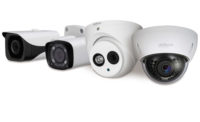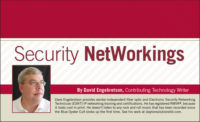‘Baiting the Field’ With Quality Cable Installations

Honeywell Cable and Custom Electronics “Genesis” Cat6 cable is powerful, versatile and inexpensive for what it can do now and in the future.
IMAGE COURTESY OF HONEYWELL
My father and grandfather were old-school hunters and fishermen who were tempered by living through the Great Depression. As a youth I would listen in wonder as they described various nefarious methods to draw edible game within shooting range, as procuring protein for their hungry families was truly a life-or-death issue. One of these techniques was to put out corn or other grains in forest locations to draw deer and other animals under their gun sights, which they called “baiting the field.”
Our industry has the opportunity to bait the field at our clients’ locations by properly installing upgraded Category cables to provide increased potential for carrying large amounts of IP network bandwidth when future devices are added or replaced in their IP-based security systems.
I have seen many changes in our industry in the past 38 years. In terms of cabling, in the old days we used brown and/or white “twist,” typically with 18-gauge stranded conductors to connect door contacts, window foil and other basic devices, which provided a simple “open or close” function; either the electrical path made a complete circuit or the path was interrupted by an open door/window contact or other security device. When keypads replaced “shunt” locks and motion detectors became popular the cable of choice was often 22-4 solid or stranded cable, with two of the conductors providing a path for the keypad data or alarm output of the motion detector and the other pair being used to provide (usually) 12 VDC current to power the end devices.
In these older technologies the cables provided very basic functions such as delivering operating current, indicating open or closed circuits, and, in the case of keypads and some addressed devices, the transmission of fairly simple communication protocols.
Now we are in a completely different world with the massive infusion of IP-enabled security devices such as surveillance cameras, intercoms and other building monitoring devices. The transmission of 10/100/1000 Mbps Ethernet requires high-quality cable, careful installation and proper termination to ensure that the connectivity of a particular cable is up to the task of transmitting and receiving high-bandwidth network communications from end devices back to a network switch.
Copper cabling for high-bandwidth Ethernet connectivity has evolved along with the IEEE standards. Cat5e cable is perfectly functional for 10/100/1000 Mbps Ethernet, provided that the cable is installed and terminated properly and also meets the 100 meters/328 ft. maximum distance. In the general networking industry the tide is moving toward larger bandwidth Ethernet standards such as the 10 Gigabit per second standard, IEEE 802.3an-2006. The transmission of 10 Gbps Ethernet requires the use of either Cat6 cable, which is approved for distances out to 180 ft., or Cat6a UTP which can potentially provide 10 Gbps communication over a 100-meter distance.
Security dealers are presented with a dilemma and an opportunity when choosing UTP cable to install for IP security device installations. In most cases IP cameras and other electronic security equipment only need the capability of 10/100 Ethernet, which is readily provided with either Cat5e UTP or coax cable using media converters. It makes sense as even a high-bandwidth HDIP camera may output 10 to 15 Mbps of video, which is only a fraction of the capacity of a properly installed Cat5e cable. However, if the concept of “future proofing” is part of the installation plan, the use of higher grade Cat6 or Cat6a UTP should be given careful consideration. Keep in mind that while you may be connecting a single IP camera to a cable today, in the future there may be additional IP devices that you can sell to your client if the cable plant you install is capable of higher bandwidth Ethernet transmissions. These devices may be something that hasn’t been invented yet, or a small network switch can be mounted at the far end of a cable, and multiple 10/100 devices such as additional cameras, access control or intercom devices might be added in the future.
Cost is always a consideration; however, the price differential between Cat5e and Cat6 cable can be relatively small when compared with the overall cost of the installation. For example, Honeywell Network Cable’s Cat6 part # 63602101 is sold for roughly $105/1,000 ft., while their Cat5e part # 63301106 costs about $62/1,000 ft. So there’s a $40 per 1,000 ft. difference if you choose the higher grade cable, but you are “baiting the field” to provide your clients with upgraded and updated devices and services in the future. In the big picture I believe smart installation companies will standardize using cables that will provide full IP functionality now and in the future. And remember to use the appropriate RJ-45 jacks that are rated for the type of cable being installed.
Looking for a reprint of this article?
From high-res PDFs to custom plaques, order your copy today!








